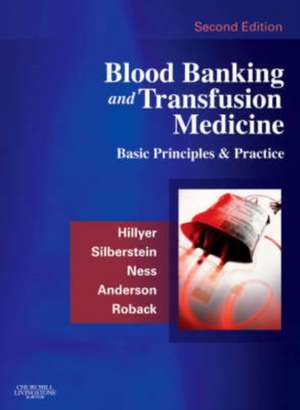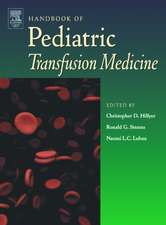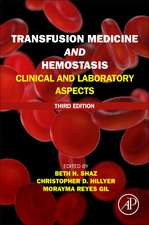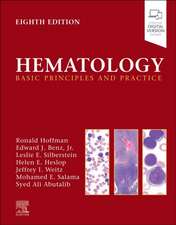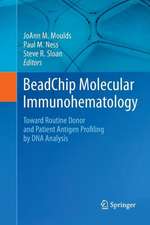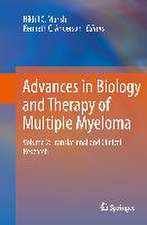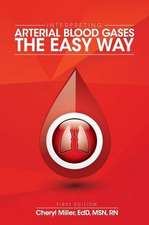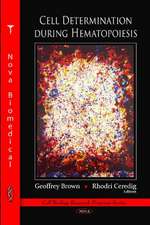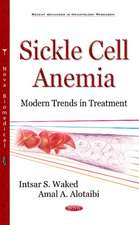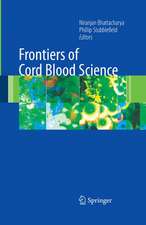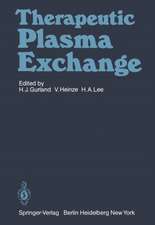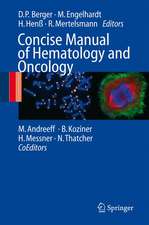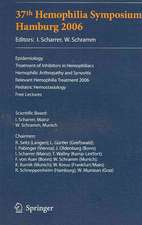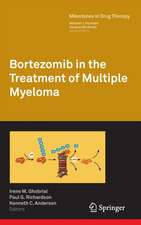Blood Banking and Transfusion Medicine: Basic Principles and Practice
Autor Christopher D. Hillyer, Leslie E. Silberstein, Paul M. Ness, Kenneth C. Anderson, John D. Robacken Limba Engleză Hardback – 21 noi 2006
Preț: 1821.18 lei
Preț vechi: 1917.04 lei
-5% Nou
Puncte Express: 2732
Preț estimativ în valută:
348.47€ • 364.82$ • 288.35£
348.47€ • 364.82$ • 288.35£
Carte disponibilă
Livrare economică 15-29 martie
Preluare comenzi: 021 569.72.76
Specificații
ISBN-13: 9780443069819
ISBN-10: 0443069816
Pagini: 912
Ilustrații: Approx. 200 illustrations
Dimensiuni: 211 x 276 x 48 mm
Greutate: 2.27 kg
Ediția:2
Editura: Elsevier
Locul publicării:United Kingdom
ISBN-10: 0443069816
Pagini: 912
Ilustrații: Approx. 200 illustrations
Dimensiuni: 211 x 276 x 48 mm
Greutate: 2.27 kg
Ediția:2
Editura: Elsevier
Locul publicării:United Kingdom
Public țintă
HematologistsCuprins
Part I. History
1. A Brief History of Blood Transfusion
Part II. Blood Banking
A. Immunohematology
i. Basic Principles
2. Principles of the Immune System Central to Transfusion Medicine
3. Principles of the Complement System Central to Transfusion Medicine
4. Principles of Red Blood Cell Allo- and Autoantibody Formation and Function
ii. Red Blood Cell, Platelet and Leukocyte Antigens and Antibodies
5. Membrane Blood Group Antigens and Antibodies
6. ABO and Related Antigens and Antibodies
7. Rh, Kell, Duffy, and Kidd Antigens and Antibodies
8. Other Blood Group Antigens and Antibodies
9. Human Platelet Antigens and Antibodies
10. HLA and Granulocyte Antigens and Antibodies
B. Blood Donation, Manufacturing, Testing and Storage
11. Blood Donation and Collection
12. Blood Manufacturing: Component Preparation, Storage and Transportation
13. Red Blood Cell Metabolism During Storage: Basic Principles and Practical Aspects
14. Infectious Disease Testing: Basic Principles and Practical Aspects
C. Regulatory, Quality and Legal Principles
15. Regulatory Principles and Issues Central to Blood Banking and Transfusion Medicine
16. Quality Assurance, Control and Improvement and Accreditation
17. Legal Principles and Issues Central to Transfusion Medicine
D. Specific Blood Components
18. Packed Red Blood Cell and Related Products
19. Fresh Frozen Plasma and Related Products
20. Cryoprecipitate and Related Products
21. Albumin
22. IVIg and Derivatives
23. Platelets and Related Products
24. Granulocytes
25. Coagulation Factor Preparations
E. Special Processes and Products
26. Leukocyte Reduced Products
27. Virus Safe Products: Pathogen Reduction and Inactivation
28. Irradiated Products
29. Washed and/or Volume Reduced Blood Components
30. Blood Management: Conservation, Salvage and Alternatives to Allogeneic Transfusion
31. Blood Substitutes: Basic Principles and Pracitcal Aspects
III. Transfusion Medicine
A. Transfusion in Specific Clinical Settings
32. Red Blood Cell Transfusion: Surgical and Traumatic Blood Loss and Anemia
33. Post-Transfusion Red Blood Cell and Platelet Survical and Kinetics: Basic Principles and Practical Aspects
34. Transfusion of the Patient with Congenital Coagulation Defects
35. Transfusion of the Patient with Acquired Coagulation Defects
36. Obstetric and Intrauterine Transfusion
37. Transfusion of the Neonates and Pediatric Patients
38. Transfusion of the Hemoglobinopathy Patient
39. Transfusion to Bone Marrow or Solid Organ Transplant Recipients
40. Transfusion of the Platelet Refractory Patient
41. Transfusion of the Patient with an Autoimmune Hemolytic Anemia
42. Transfusion in Economically-Restricted Countries and Developing Countries
B. Complications of Transfusion
i. Infectious Complications
43. Hepatitis A, B, and Non-A, Non-B, Non-C Viruses
44. Hepatitis C
45. HIV, HTLV, and Other Retroviruses
46. Human Herpesvirus Infections
47. Bacterial Infections: Bacterial Contamination, Testing and Post Transfusion Complications
48. Other Viral, Bacterial and Prion-Based Infectious Complications
ii. Non-Infectious Complications
49. Acute and Delayed Hemolytic Transfusion Reactions
50. Febrile, Allergic, and Other Noninfectious Transfusion Reactions
51. Transfusion-Related Acute Lung Injury
52. Transfusion-Related Immunomodulation
53. Post-Transfusion Engraftment Syndromes: Microchimerism and TA-GvHD
C. Therapeutic Apheresis
54. Therapeutic Apheresis: Basic Principles and Practical Aspects
55. Therapeutic Plasma Exchange
56. Therapeutic Cytapheresis
D. Cellular Therapies and Tissue Banking
57. The Role of Transfusion Medicine in Cellular Therapies
58. Bone Marrow and Peripheral Blood Stem Cells: Collection, Processing and Transfusion
59. Umbilical Cord Blood Stem Cells: Collection, Processing and Transfusion
60. Mononuclear Cell-Based Preparations
61. Tissue Banking in the Hospital Setting
1. A Brief History of Blood Transfusion
Part II. Blood Banking
A. Immunohematology
i. Basic Principles
2. Principles of the Immune System Central to Transfusion Medicine
3. Principles of the Complement System Central to Transfusion Medicine
4. Principles of Red Blood Cell Allo- and Autoantibody Formation and Function
ii. Red Blood Cell, Platelet and Leukocyte Antigens and Antibodies
5. Membrane Blood Group Antigens and Antibodies
6. ABO and Related Antigens and Antibodies
7. Rh, Kell, Duffy, and Kidd Antigens and Antibodies
8. Other Blood Group Antigens and Antibodies
9. Human Platelet Antigens and Antibodies
10. HLA and Granulocyte Antigens and Antibodies
B. Blood Donation, Manufacturing, Testing and Storage
11. Blood Donation and Collection
12. Blood Manufacturing: Component Preparation, Storage and Transportation
13. Red Blood Cell Metabolism During Storage: Basic Principles and Practical Aspects
14. Infectious Disease Testing: Basic Principles and Practical Aspects
C. Regulatory, Quality and Legal Principles
15. Regulatory Principles and Issues Central to Blood Banking and Transfusion Medicine
16. Quality Assurance, Control and Improvement and Accreditation
17. Legal Principles and Issues Central to Transfusion Medicine
D. Specific Blood Components
18. Packed Red Blood Cell and Related Products
19. Fresh Frozen Plasma and Related Products
20. Cryoprecipitate and Related Products
21. Albumin
22. IVIg and Derivatives
23. Platelets and Related Products
24. Granulocytes
25. Coagulation Factor Preparations
E. Special Processes and Products
26. Leukocyte Reduced Products
27. Virus Safe Products: Pathogen Reduction and Inactivation
28. Irradiated Products
29. Washed and/or Volume Reduced Blood Components
30. Blood Management: Conservation, Salvage and Alternatives to Allogeneic Transfusion
31. Blood Substitutes: Basic Principles and Pracitcal Aspects
III. Transfusion Medicine
A. Transfusion in Specific Clinical Settings
32. Red Blood Cell Transfusion: Surgical and Traumatic Blood Loss and Anemia
33. Post-Transfusion Red Blood Cell and Platelet Survical and Kinetics: Basic Principles and Practical Aspects
34. Transfusion of the Patient with Congenital Coagulation Defects
35. Transfusion of the Patient with Acquired Coagulation Defects
36. Obstetric and Intrauterine Transfusion
37. Transfusion of the Neonates and Pediatric Patients
38. Transfusion of the Hemoglobinopathy Patient
39. Transfusion to Bone Marrow or Solid Organ Transplant Recipients
40. Transfusion of the Platelet Refractory Patient
41. Transfusion of the Patient with an Autoimmune Hemolytic Anemia
42. Transfusion in Economically-Restricted Countries and Developing Countries
B. Complications of Transfusion
i. Infectious Complications
43. Hepatitis A, B, and Non-A, Non-B, Non-C Viruses
44. Hepatitis C
45. HIV, HTLV, and Other Retroviruses
46. Human Herpesvirus Infections
47. Bacterial Infections: Bacterial Contamination, Testing and Post Transfusion Complications
48. Other Viral, Bacterial and Prion-Based Infectious Complications
ii. Non-Infectious Complications
49. Acute and Delayed Hemolytic Transfusion Reactions
50. Febrile, Allergic, and Other Noninfectious Transfusion Reactions
51. Transfusion-Related Acute Lung Injury
52. Transfusion-Related Immunomodulation
53. Post-Transfusion Engraftment Syndromes: Microchimerism and TA-GvHD
C. Therapeutic Apheresis
54. Therapeutic Apheresis: Basic Principles and Practical Aspects
55. Therapeutic Plasma Exchange
56. Therapeutic Cytapheresis
D. Cellular Therapies and Tissue Banking
57. The Role of Transfusion Medicine in Cellular Therapies
58. Bone Marrow and Peripheral Blood Stem Cells: Collection, Processing and Transfusion
59. Umbilical Cord Blood Stem Cells: Collection, Processing and Transfusion
60. Mononuclear Cell-Based Preparations
61. Tissue Banking in the Hospital Setting
